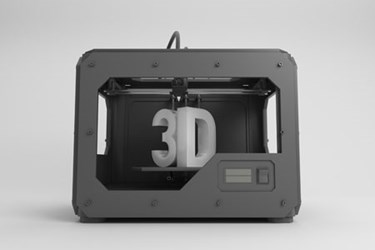VARs, ISVs Will Find Opportunities In 3D Printing For Healthcare
By Megan Williams, contributing writer

3D printing is set to revolutionize the healthcare industry. The technology that has been around since the 80s, has finally been developed to a point where it will change the way we handle medicine.
This means opportunities not only for advances in clinical treatment, but also for solutions providers working with the technology itself.
Uses In Healthcare
3D printing brings one huge and needed value to the healthcare industry…customization.
While procedures around knee replacements used to involve six different options, with different bone cutting procedures required for each, now, a knee can be designed to whatever specifications the patient needs, saving inches of bone. You may have even heard of the recent skull printed for a 22-year old woman.
Hearing aids and dental implants have always been 3D printed, but what used to take weeks can now be done in the matter of a day — or even an hour.
Edible meat has already been printed, and functional organs are finally possible with the help of 3D printing. Functioning pieces of liver tissue are currently in use for drug testing and surgical practice.
Opportunities For Solutions Providers
What does this mean for VARs and ISVs? It means that there are multiple, growing areas, where opportunities in healthcare will be cropping up.
- Printer Software — All printers receive their directions from software specially designed for 3D tasks. While the software is nothing new, there is opportunity in the design of healthcare specific offerings.
- Printers — The cost of the development and manufacturing of printers themselves is dropping and most of the industry has been focused on the manufacturing sector. Entry costs are bound to be higher (due to the nature of the healthcare industry), but growth prospects are promising.
- Recycling — Body parts aside, many of the applications for 3D printing in healthcare involved short-term use (like casts and braces.) Since thermoplastics can be molded repeatedly, there will likely be a market for specialized recycling of materials printed for health uses.
- Accessories — Performance monitoring of 3D printed materials in healthcare is very important. Electronics could eventually be built into implants and aids in the form of sensors that would report back to apps and other software to record various statistics around the behavior of the implant itself.
There will be limitations though.
While it’s expected that 3D printers will soon become a norm in homes around the world, not everyone can just whip up a kidney. Also, while printing is much faster than it used to be, production times still run around 30 minutes, meaning that the technology is still not particularly useful on the battlefield or at the scenes of accidents. On top of that, healthcare is a highly regulated industry and we have yet to see how agencies will respond to safety and use questions around the innovation.
Still though, the developments around 3D printing show no sign of slowing up and only indicate new and growing businesses opportunities around the advancement.
